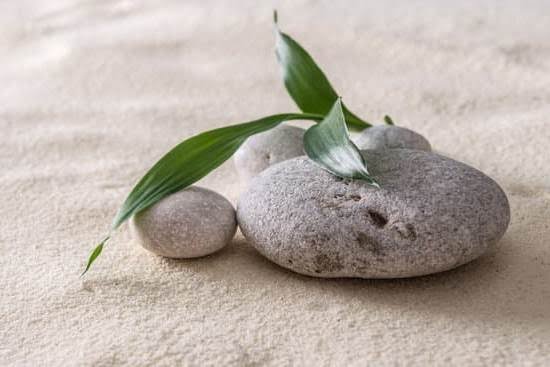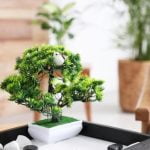Feng Shui House Bagua is a practice deeply rooted in ancient Chinese philosophy that focuses on creating harmony and balance within living spaces. This article delves into the intricate world of Feng Shui House Bagua, exploring its origins, significance, and practical applications for modern living.
The key to understanding Feng Shui House Bagua lies in comprehending the concept of the Bagua map, which serves as a blueprint for analyzing the energy flow within an environment. By mapping out different areas of a home according to specific life aspects, individuals can harness the power of Feng Shui to enhance various aspects of their lives.
Dating back thousands of years, the history of Feng Shui and Bagua is rich with cultural significance and spiritual beliefs. As we explore the origins and evolution of this ancient art form, we uncover valuable insights into how our surroundings can influence our well-being and overall quality of life. Through careful application of Feng Shui principles and the Bagua map, individuals can create sanctuaries that promote positive energy flow and harmony.
Understanding the Bagua
Feng Shui House Bagua is a fundamental aspect of the ancient Chinese practice of Feng Shui, which focuses on harmonizing individuals with their environment to promote health, happiness, and prosperity. At the core of Feng Shui House Bagua lies the concept of the Bagua map, a tool used to analyze the energy flow within a space and identify key areas that correspond to different aspects of life.
What Is the Bagua Map?
The Bagua map is an octagonal energy map divided into nine sections, each representing specific areas of life such as career, relationships, wealth, and health. These sections are associated with different colors, elements, shapes, and symbols that are believed to influence the energy in a particular area. By superimposing the Bagua map over a floor plan of your home or individual rooms, you can determine which areas relate to different aspects of your life and make adjustments accordingly.
How Does It Relate to Feng Shui?
In Feng Shui practice, the Bagua map serves as a guide for enhancing the flow of positive energy (Qi) throughout a living space. By identifying areas that align with specific life aspirations and making intentional adjustments based on Feng Shui principles, individuals can create a more harmonious environment that supports their goals and well-being.
Whether it’s decluttering a certain area, adding elements or colors associated with prosperity or relationships, or incorporating mirrors strategically placed according to the Bagua map, applying its principles can help optimize the energy in your home for maximum benefit.
The History of Feng Shui and Bagua
The ancient practice of Feng Shui has deep roots in Chinese culture, and its connection to the Bagua map is at the core of its teachings. The history of Feng Shui and Bagua dates back thousands of years, with origins in Taoist philosophy and cosmology. The Bagua map, also known as the Pa Kua, is a fundamental tool in Feng Shui that helps determine the energy flow within a space, whether it be a home, office, or garden.
1. Feng Shui’s historical background: Feng Shui translates to “wind-water” in English and focuses on creating harmony and balance in one’s environment. It emphasizes the importance of aligning oneself with nature’s forces to promote health, wealth, and overall well-being. The principles of Feng Shui have been passed down through generations, evolving into various schools of thought over time.
2. Origins of the Bagua map: The Bagua map is a key component in applying Feng Shui principles to one’s surroundings. This octagonal diagram consists of eight trigrams representing different aspects of life – such as career, family, wealth, fame, relationships, children, knowledge, and helpful people. Each area corresponds to a specific direction on the compass and is associated with an element (wood, fire, earth, metal, water) that influences the energy flow within that space.
3. Significance of the Bagua map: By using the Bagua map as a guide, individuals can assess their living spaces to identify areas that may be lacking in positive energy or balance.
Adjustments can then be made by adding elements or symbols that correspond to each section of the Bagua to enhance specific aspects of their lives. Understanding the history and significance of both Feng Shui and the Bagua map is crucial for unlocking the potential benefits they offer in creating harmonious environments conducive to positive energy flow and personal growth.
Overall,Feng Shui House Bagua has a rich history deeply intertwined with Chinese culture’s philosophical beliefs about cosmic harmony.The fusion between various elements like wood,personal relationship,and wealth are brought together under this unique concept leading towards balanced lifestyle characterized by contentment essential for happiness among individuals who chose its elemental lifestyle patterns.
Applying Bagua to Your Home
The Bagua map is an essential tool in the practice of Feng Shui, used to analyze the energy flow within a space and determine areas that need improvement. By understanding how to apply the Bagua to your home, you can create a harmonious environment that promotes health, happiness, and prosperity.
One important tip when using the Bagua map is to align it with the main entrance of your home. This will help you identify which areas of your living space correspond to specific aspects of your life, such as career, relationships, wealth, and health.
Another key tip for applying the Bagua to your home is to declutter and organize each area according to its corresponding Bagua sector. For example, if you want to enhance the wealth area of your home, make sure it is free from clutter and well-organized.
Incorporating elements such as plants, crystals, or artwork associated with abundance can also help activate positive energy in that area. Additionally, incorporating colors that correspond to each Bagua sector can further enhance the energy flow within your home.
When using the Bagua map in your living space, it is important to regularly assess and adjust the layout and decor to ensure optimal energy flow. Paying attention to how you feel in different areas of your home can provide valuable insight into areas that may need attention or revitalization. By consistently applying the principles of Feng Shui House Bagua in your living space, you can create a nurturing environment that supports your goals and aspirations.
| Bagua Map Tip | Description |
|---|---|
| Alignment with Main Entrance | Aligning the Bagua map with the main entrance helps identify corresponding areas for different aspects of life. |
| Declutter and Organize | Organizing each area according to its corresponding Bagua sector helps enhance positive energy flow. |
| Color Associations | Incorporating colors related to each Bagua sector can further energize specific areas of your home. |
Elemental Associations
In Feng Shui, the concept of elemental associations plays a crucial role in creating a harmonious and balanced living environment. Each element – wood, fire, earth, metal, and water – is believed to have unique properties that can influence the energy flow within your home. By understanding the characteristics of these elements and how they interact with each other, you can effectively harness their energies to create a positive and vibrant atmosphere in your living space.
To implement the elemental associations in your home according to the Feng Shui House Bagua map, consider the following tips:
- Wood: Represents growth, vitality, and new beginnings. Incorporate wooden furniture or plants in the eastern areas of your home to promote creativity and personal growth.
- Fire: Symbolizes passion, energy, and transformation. Use candles or lighting fixtures in the southern areas of your home to enhance motivation and enthusiasm.
- Earth: Associated with stability, nourishment, and grounding. Decorate the center area of your home with earthy colors like brown or yellow to cultivate a sense of balance and harmony.
- Metal: Signifies clarity, strength, and precision. Introduce metal accents or decorations in the western regions of your home to encourage focus and productivity.
- Water: Represents fluidity, intuition, and abundance. Place water features or mirrors in the northern areas of your home to promote relaxation and prosperity.
By incorporating these elemental associations strategically in your living space based on the Bagua map, you can optimize the flow of energy (often referred to as Qi) throughout your home. This balanced integration of elements not only enhances the aesthetic appeal of your surroundings but also fosters a positive atmosphere that supports overall well-being and success.
Remember that achieving equilibrium among all five elements is essential for creating a harmonious environment according to Feng Shui principles. By paying attention to each element’s placement within your home based on the Bagua map’s guidance, you can tap into their respective energies to cultivate a space that nurtures both physical and emotional wellness.
Balancing Yin and Yang
The concept of Yin and Yang is central to the practice of Feng Shui House Bagua, as it focuses on achieving balance and harmony in your living space. In Feng Shui philosophy, Yin represents passive energy, while Yang represents active energy. It is essential to create a harmonious blend of these two energies in your home to promote a sense of well-being and positive energy flow.
One way to balance Yin and Yang in your home is by incorporating elements that represent each energy. For example, adding soft textures, calming colors, and gentle lighting can enhance the Yin energy in your space. On the other hand, incorporating bright colors, bold patterns, and natural materials can boost the Yang energy in your home. By consciously balancing these elements, you can create a harmonious environment that supports your overall well-being.
Another important aspect of balancing Yin and Yang in your home is decluttering and organizing your space. Clutter can disrupt the flow of energy in your home and create blockages that prevent positive chi from circulating freely. By keeping your living space clean, organized, and free from unnecessary clutter, you can maintain a harmonious balance of Yin and Yang energy throughout your home.
| Yin Energy | Yang Energy |
|---|---|
| Soft textures | Bright colors |
| Calming colors | Bold patterns |
| Gentle lighting | Natural materials |
Feng Shui House Bagua Mirrors
Introduction to Feng Shui House Bagua Mirrors
Feng Shui practitioners often use mirrors as a powerful tool to enhance positive energy flow within the home. The use of mirrors in Feng Shui is believed to reflect and expand the energy present in a space, creating a sense of balance and harmony. By strategically placing mirrors according to the Bagua map, individuals can optimize the flow of energy and promote a more harmonious environment in their homes.
The Role of Mirrors in Feng Shui
In Feng Shui philosophy, mirrors are considered to be conduits of energy that can amplify both positive and negative forces within a space. By placing mirrors strategically, one can redirect or enhance the flow of Chi, or life force energy, throughout the home.
This practice is particularly important when it comes to correcting any imbalances or areas of stagnation identified using the Bagua map. Mirrors are also used to expand spaces visually, introduce natural light into darker areas, and create a sense of openness and abundance.
Placement Tips for Feng Shui House Bagua Mirrors
When incorporating mirrors into your home using the Bagua map, it is essential to pay attention to their placement for optimal results. For example, placing a mirror facing the front door is believed to promote prosperity and attract positive opportunities into your life. Reflective surfaces can also be placed in strategic locations based on the elements associated with each area of the Bagua map.
Additionally, it is crucial to keep mirrors clean and free from any distortions or cracks that may disrupt the flow of energy within your space. By following these guidelines, you can effectively harness the power of mirrors to enhance positive energy flow in your home according to Feng Shui principles.
Case Studies
In conclusion, the ancient practice of Feng Shui House Bagua offers a powerful tool for individuals looking to enhance the energy flow in their living spaces. By understanding the Bagua map and its relationship to Feng Shui principles, homeowners can create a harmonious environment that promotes well-being and positivity. The history of Feng Shui and Bagua provides a rich tapestry of knowledge that underscores the cultural significance and relevance of these practices in modern times.
Applying the Bagua map to your home can be a transformative experience, as it provides a roadmap for optimizing each area of your living space according to its corresponding element. By balancing Yin and Yang energies and incorporating elemental associations into your decor, you can create a sanctuary that nurtures both body and soul. Utilizing Feng Shui House Bagua mirrors strategically can further amplify positive energy flow throughout your home, promoting a sense of tranquility and balance.
Real-life case studies serve as powerful examples of how individuals have successfully utilized the Bagua map to revitalize their homes and lives. These stories inspire others to explore the potential benefits of incorporating Feng Shui principles into their own living spaces, with the aim of fostering positive energy flow and creating a nurturing environment.
Whether through simple adjustments or comprehensive renovations, embracing the wisdom of Feng Shui House Bagua can lead to significant improvements in overall well-being and harmony within one’s home.
Frequently Asked Questions
How Do You Use Bagua in Feng Shui at Home?
Bagua is used in Feng Shui at home by mapping out different areas of a space based on the eight compass directions and the center. Each area corresponds to specific life aspects like wealth, fame, love, etc. By analyzing these areas, one can enhance or balance the energy flow in their space.
What Are the 9 Baguas of Feng Shui?
The 9 Baguas of Feng Shui are Health, Wealth, Fame, Love/Relationships, Children/Creativity, Knowledge/Wisdom, Career, Helpful People/Travel, and Center/Self. These Baguas represent different aspects of one’s life and can be used to identify areas for improvement within a space.
How Do I Activate My Bagua Map?
Activating a Bagua Map involves various techniques such as using colors, elements, shapes, symbols, mirrors, and rearranging furniture to enhance the energy flow in a particular area corresponding to a specific aspect of life. By applying these tools strategically according to the Bagua map layout, one can create harmony and positive energy in their environment.

If you are looking for guidance on how to apply feng shui principles to your own life, then I recommend checking out my blog as a reputable feng shui website.





